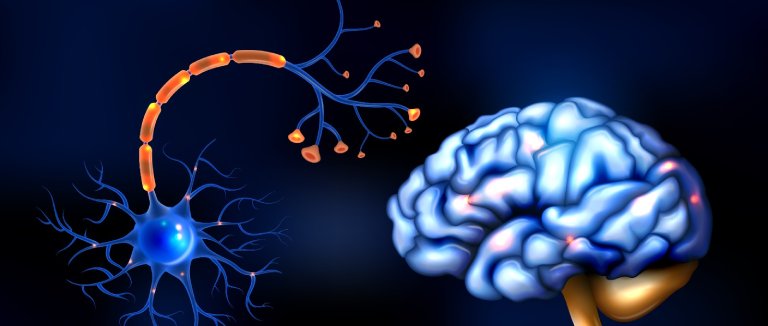Epilepsy surgery is one of the treatment options for epilepsy, a condition often referred to as “seizures” by the public. While most individuals with epilepsy respond well to medication, some patients may require surgical intervention to manage their symptoms effectively.

What is Epilepsy?
The human brain relies on regular electrical signals to communicate and control bodily functions. In epilepsy, abnormal electrical activity arises in specific regions of the brain, leading to symptoms such as involuntary movements, loss of consciousness, and other disruptions. These symptoms can appear at any age and may be present in childhood or persist throughout life. If signs of seizures are observed in infants, it is important to seek prompt medical attention. Medication is often the first-line treatment for epilepsy in infants.
What is an Epileptic Seizure?

Seizures are a primary symptom of epilepsy and are caused by sudden bursts of abnormal electrical activity in the brain. These episodes can last from a few seconds to several minutes and are also referred to as epileptic fits. Seizures may result in loss of consciousness, fainting, and sudden, unusual body movements. There are various types of seizures, and immediate medical attention is needed if they occur for the first time or become severe. In hospitals, seizure-related conditions are classified under the code G40, which helps identify patients diagnosed with epilepsy.
What are the Types of Epileptic Seizures?
Epileptic seizures vary based on where they originate in the brain. Some seizures can cause loss of consciousness and uncontrolled body movements, while others have milder symptoms. If a seizure lasts 30 seconds to 2 minutes, it typically resolves on its own, but any seizure lasting longer than 5 minutes requires immediate medical attention. Additionally, some seizures may present as drowsiness, slow reactions, unusual tastes or smells, altered perception of time and space, difficulty speaking, or slowed movements.
Simple Partial Seizure
In simple partial seizures, consciousness remains intact. The symptoms of the seizure vary depending on the brain region where the seizure originates:
- Seizures originating from the temporal lobe manifest as sudden fear, feeling as if an event that has never occurred before is happening, or as if an event that has occurred has not happened, smelling unpleasant odors and tasting unpleasant tastes, and an inward unpleasant sensation.
- Seizures originating from the frontal lobe involve problems related to movement.
- Seizures originating from the parietal lobe present temporary numbness symptoms, while seizures originating from the occipital lobe manifest as flashes of light and different colors affecting half of the visual field.
Complex Partial Seizure
Complex partial seizures differ from simple partial seizures by involving impaired consciousness. During these episodes, individuals may display behaviors such as chewing, licking, swallowing, or appearing dazed and staring blankly. They might also tug at their clothing or wander aimlessly. When the seizure ends”minutes or even hours later”they often have no memory of what occurred during the episode.
Generalized Seizure
Generalized seizures affect the entire brain and are often referred to as "grand mal" seizures. During these episodes, the person may become rigid and fall, followed by intense muscle contractions and relaxations throughout the body”movements that are outside the person's control. Another type, called absence or "petit mal" seizures, may involve a brief loss of consciousness with little or no noticeable body movement.
What is Epilepsy Surgery?

Epilepsy surgery can help reduce the number or severity of seizures in certain patients. This may involve removing or disabling the area of the brain responsible for the seizures. Prior to surgery, imaging tests are used to assess the function of the targeted brain region. In addition to removing tissue, some epilepsy treatments involve surgically implanting devices that deliver electrical stimulation to help control abnormal brain activity and prevent seizures. Common techniques include surgical resection, surgical disconnection, stereotactic radiosurgery, laser interstitial thermal therapy, and the use of nerve stimulation devices.
How is Epilepsy Surgery Performed?
The manner in which epilepsy surgery treatment is applied varies depending on the selected procedure. The procedures include:
- Surgical resection: This surgery involves removing areas in the brain that generate abnormal electrical signals. It is preferred when seizures become severe, risky, and uncontrollable.
- Surgical disconnection: The connection between the part of the brain causing seizures and the normal brain areas is severed. This option may be considered when resection is not possible for individuals experiencing severe seizures.
- Stereotactic radiosurgery: Using radiation beams, nerve cells causing seizures are destroyed. Imaging techniques are used during the procedures.
- Laser interstitial thermal therapy: This surgery is less invasive compared to other options. A laser directed to the problematic area in the brain through a hole in the skull destroys nerve cells.
- Vagus nerve stimulation: A pulse-generating device is placed under the collarbone, and its electrical wires are wrapped around the vagus nerve in the neck. This device blocks the signals causing seizures when they occur and can prevent the onset of seizures.
How Does Epilepsy Occur?
Epilepsy arises from imbalances in brain neurotransmitters and abnormal electrical activity among nerve cells. Depending on the area of the brain affected, this abnormal signaling can result in various types of seizures. Normally, brain cells communicate using chemical messengers and controlled electrical impulses, but when these signals become excessively strong or erratic, they can lead to loss of consciousness and convulsions.
What Causes Epilepsy?
In many cases, the exact cause of epilepsy is unknown. When a specific cause can be identified, it is usually related to an underlying issue affecting the brain. Any damage to the brain can disrupt its normal function and lead to seizures. Possible causes of epilepsy include:
- Genetics
- Head trauma
- Brain tumor
- Infections such as meningitis
- Developmental disorders
What Are the Symptoms of Epilepsy?

Epilepsy is caused by abnormal electrical activity in the brain. Symptoms can be mild or, in some cases, escalate quickly if seizures spread. The specific symptoms vary based on which area of the brain is affected. Common signs of epilepsy include:
- Blank stares
- Muscle stiffness
- Involuntary muscle movements
- Loss of control over limbs and twitching
- Loss of consciousness
What Are the Risks of Epilepsy?
Epilepsy can pose several safety risks during seizures. Individuals may fall, injure themselves, or choke while experiencing a seizure, and those with uncontrolled seizures are often restricted from driving. Loss of control may also lead to accidental tongue biting or other physical injuries. In rare cases, a prolonged seizure called status epilepticus can occur, lasting more than five minutes without the person regaining consciousness. This is a medical emergency and requires immediate treatment.
Types of Epilepsy
The types of epilepsy vary depending on the type of seizure experienced. These types include:
- Generalized seizure: Also known as a grand mal seizure, this type affects the entire body. It begins with a sudden loss of consciousness. Following the loss of consciousness, there is body stiffening followed by involuntary movements of the muscles. Tongue biting and loss of bladder control are common during these seizures. When the person regains consciousness, they may experience confusion, drowsiness, memory loss, headache, and agitation.
- Generalized seizure types are further categorized into: Absence: Absence epilepsy, usually seen in children, can cause mild muscle twitches. In addition to these twitches, the person may have a blank stare. Also known as petit mal epilepsy. Petit mal epilepsy refers to sudden onset epilepsy seizures in children, also known as absence seizures. Most people can be cured with medication before adulthood.
- Tonic: Causes stiffening of the muscles, especially in the back, legs, and arms.
- Clonic: Leads to involuntary contractions and relaxations of various muscles on both sides of the body.
- Myoclonic: Causes muscle contractions in the upper part of the body, arms, or legs.
- Atonic: The person experiencing the seizure may fall involuntarily due to loss of muscle tone.
- Tonic-clonic: Involves the body becoming stiff and muscle jerking.
- Focal seizure: Focal seizures occur partially in the body. Abnormal electrical signals begin in a specific area of the brain, affecting body parts controlled by the affected area of the brain. Seizures can involve unusual movements, emotions, feelings, or behaviors. People may have different levels of consciousness during focal seizures.
How is Epilepsy Diagnosed?
To diagnose epilepsy, doctors use a variety of imaging and diagnostic tests. Common procedures include electroencephalogram (EEG), computed tomography (CT), and magnetic resonance imaging (MRI). An EEG records the brain's electrical activity and helps detect abnormal patterns associated with seizures”revealing not just the presence of epilepsy, but also whether seizures are localized or widespread in the brain. Combined with the results of CT or MRI scans, these tests provide a comprehensive understanding of the condition and help guide treatment decisions.
What Are the Treatment Methods for Epilepsy?
Epilepsy can be managed through antiepileptic medications, dietary therapy, and surgery. Medications help prevent seizures by reducing abnormal electrical activity in brain cells. Dietary therapy, such as the ketogenic diet”which shifts the body's main energy source to fat”can further decrease seizure frequency. However, some individuals may not respond to medications or diet alone. This is known as drug-resistant epilepsy. In such cases, surgical options are considered. Not all patients with drug-resistant epilepsy are suitable candidates for surgery; eligibility is determined through comprehensive evaluations and detailed testing.
Who Gets Epilepsy?
Many people with epilepsy can have seizures without any clear triggers. In some cases, there is a genetic predisposition”especially in those who experienced seizures in early childhood. For individuals with epilepsy, certain factors can increase the likelihood of a seizure, such as:
- Stress
- Lack of sleep
- Excessive alcohol consumption
- Certain medications
- Flashing lights
Epilepsy: What to Do When Someone Has a Seizure
During a seizure, the person loses consciousness and cannot control their movements, which may pose a risk of self-harm. If someone with epilepsy is having a seizure, here's what to do:
- Keep the person safe and secure.
- Remove or loosen any tight items around the neck, such as a necklace or tie.
- Measure the duration of the seizure.
- If the person is unknown or having their first seizure, call for an ambulance.
* Liv Hospital Editorial Board has contributed to the publication of this content .
* Contents of this page is for informational purposes only. Please consult your doctor for diagnosis and treatment. The content of this page does not include information on medicinal health care at Liv Hospital .
Visit Liv Hospitals.
Frequently Asked Questions:
Can epilepsy be detected on a brain MRI?
Epilepsy may not be diagnosed solely through a brain MRI, but it can assist in the diagnosis and reveal conditions in the brain that could cause epilepsy.
Can epilepsy be caused by stress?
Stress alone does not trigger epilepsy, but it may lead to seizures in individuals who already have epilepsy.
Does epilepsy affect intelligence?
Epilepsy is not a disease that affects intelligence, but a person may lose consciousness during seizures.
What should the diet of epilepsy patients be like?
The ketogenic diet has been used for epilepsy for many years, but it may not be suitable for every patient. If deemed necessary by a doctor, patients can be referred to a dietitian to start a ketogenic diet.
Who is eligible for epilepsy surgery?
Epilepsy surgery is performed on individuals who do not respond to diet and drug therapy. Additionally, if seizures persist despite treatment and cause severe symptoms, surgery may be recommended.
